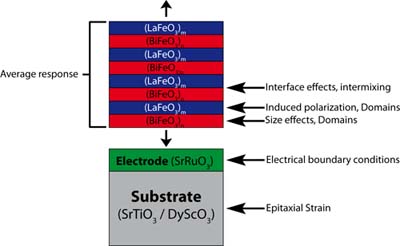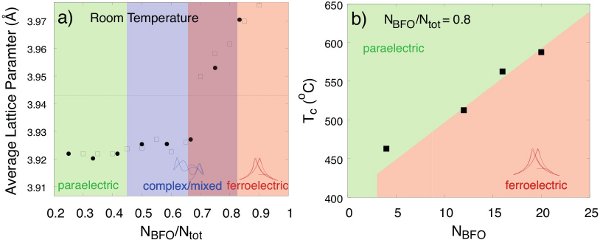Engineering new properties at oxide interfaces
Epitaxial growth of superlattices combining different perovskite oxides allows continuous tuning of functional properties such as ferroelectricity, dielectric response and piezoelectric coefficients, using both composition and strain. In addition, symmetry breaking and the coupling of different instabilities at the interfaces between two oxide layers may allow new behavior, such as improper ferroelectricity in PbTiO3-SrTiO3 superlattices, to be observed.
At present we are studying superlattices of BiFeO3 (a ferroelectric G-type antiferromagnet with rhombohedral structure in bulk, distorted to monoclinic in thin films) and LaFeO3 (a dielectric G-type antiferromagnet with orthorhombic structure in the bulk), to investigate the role of substrate strain, electric boundary conditions and composition.

Schematic representation of a BiFeO3-LaFeO3 superlattices. The arrows indicate some of the contributions from the various parts of the structure to overall properties of the superlattices.

Schematic phase diagram of BiFeO3-LaFeO3 superlattices on (110)DyScO3 substrates. (a) Room temperature phase diagram as a function of BiFeO3 fraction. There are three distinct regions: a BiFeO3-like region, a LaFeO3-like region, and a rich and complex intermediate region. (b) Phase diagram as a function of BiFeO3 thickness per period for a BiFeO3 fraction of 0.8. The transition temperature scales linear with BiFeO3 thickness.